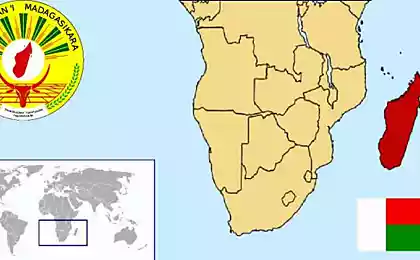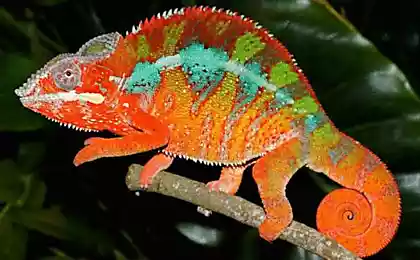1545
Nature Madagascar by Nick Garbutt
British photographer spent an epic 20-year-old foray into one of the most bizarre ecosystems of the world. 46-year-old Nick Garbutt from Cumbria has made 25 trips deep into the forests of Madagascar. He had been on the island every year since 1991. For two decades, Nick created an unusual collection of pictures photoshoot unusual and colorful species of the island.


The adult male fossa (Crytoprocta Ferox) wanders through the deciduous forest of western Madagascar.

From the continent of Africa, the island was cut off 160 million years ago. But the inhabitants of the island have evolved features that are not found anywhere else. Many of the animals that are in the pictures of Nick can be found only in Madagascar.
Verreaux's Sifaka (Propithecus verreauxi) passes through the open space in the spiny forest, southern Madagascar.

Of concern is the fact that a large number of animals in these photos could disappear in the next 20 years. Poor local communities cut down forests to make way for crops such as rice. A huge amount of wood harvested from forests destroyed, used for the production of charcoal. Nick said: "In its pristine state of Madagascar was covered by 85% forest, and now there are only 8%. Even more shocking is the fact that 50% of the forest loss has occurred in the last 50 years and I have seen these mass destruction. So I started to go here since 1991, the high hopes for the revival, I do not cherish. "
Male kopenosogo chameleon (Calumma Gallus) in lowland tropical forests near Mantadia, eastern Madagascar.

Although the number of national parks on the island is growing, environmentalists fear that this will not be enough to save many animals. "When I first visited Madagascar, there were only two national parks," - says Nick. "It is now their number has grown to 20, and they serve as a refuge for animals, where the cutting of trees is illegal, but in practice it does not always work".
The adult black-and-white Ruffed Lemur (Varecia Variegata) hanging on a branch of the National Park Andasibe-Mantadia, eastern Madagascar.

"It is inevitable that all national parks are run by people living on the island, and it is still equivalent to the loss of animals," - he says. "A large number of individuals will be easy to fade and in the parks will not stay, who to protect. We need to slow down the level of destruction and save the amazing variety ".
Koltsohvostatye lemurs (Lemur catta) basking in the sun at dawn, the park Berenty Private Reserve, southern Madagascar.

Nick Garbutt with koltsohvostym lemurs, who was left an orphan, near the national park Tsimanampetsotsa in November 2009.

Nick Garbutt in Ranomafana National Park in May 1991, during his first visit to the island.

Pygmy stump-tailed chameleon (Brookesia peyrierasi) on the finger in the reserve Nosy Mangabe, northeast of Madagascar.
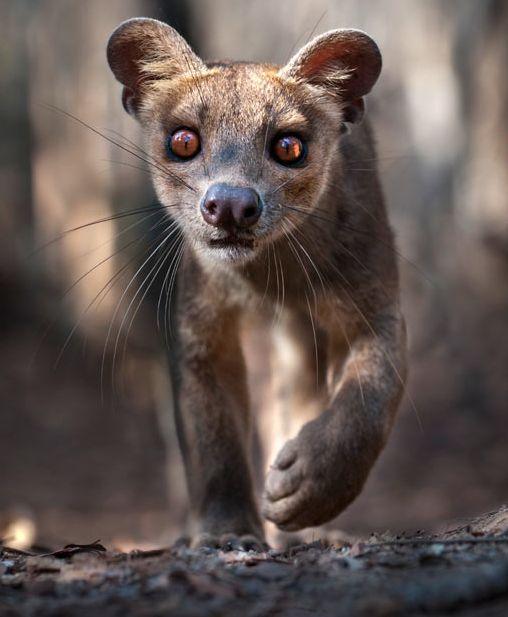
Adult female fossa (Crytoprocta Ferox) hunting for prey in the forest in the park Kirindy in western Madagascar.
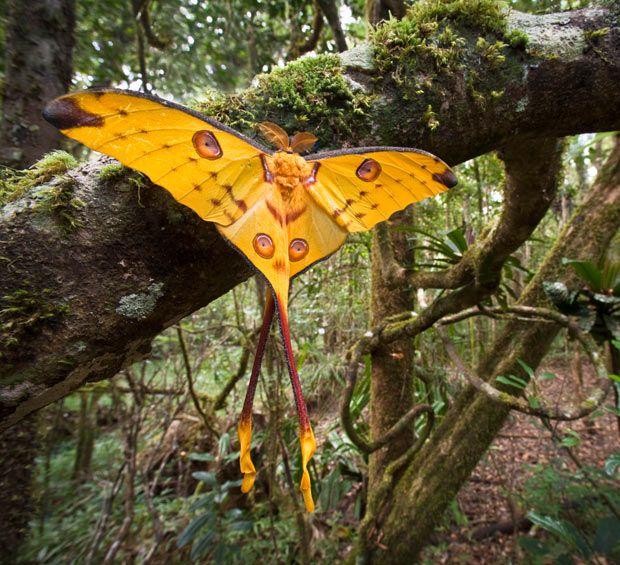
Male moths comet (Argema mittrei) dries its wings in the forest in the national park of Mantadia, Madagascar.

Male zhirafosheego weevil (Trachelophorus Giraffa) in the rainforest Vohiparara, National Park Ranomafana, Madagascar.

Listohvosty geckos (Uroplatus fimbriatus) climbs on a tree trunk in the park of Nosy Mangabe, northeast of Madagascar.

Nick Garbutt photographs chameleon-pantreru Masoala National Park in October 2009.
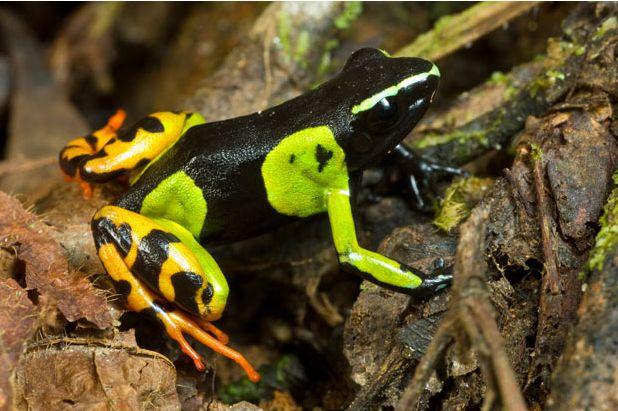
Painted Mantella Frog (Mantella madagascariensis) in the national park Mantadia, eastern Madagascar.

Male Panther Chameleon (Furcifer pardalis) looking for prey in the vegetation on the beach Peninsula National Park Masoala, northeast of Madagascar.
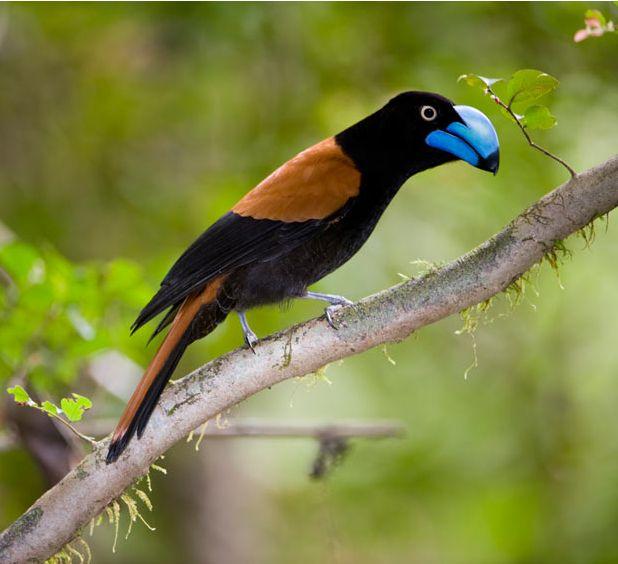
Amazing bird Helmet Vanga (Euryceros prevostii) near its nest in NP Masoala, in the northeast of Madagascar.

Male Parsons chameleon (Calumma parsonii) in the rainforest, the National Park Masoala, Madagascar.

Huge baobabs (Adansonia grandidieri) at dusk, near Morondava, western Madagascar.

Belogub tree frog (Boophis albilabris) sitting in the tropical forests in the national park Ranomafana, south-east of Madagascar.
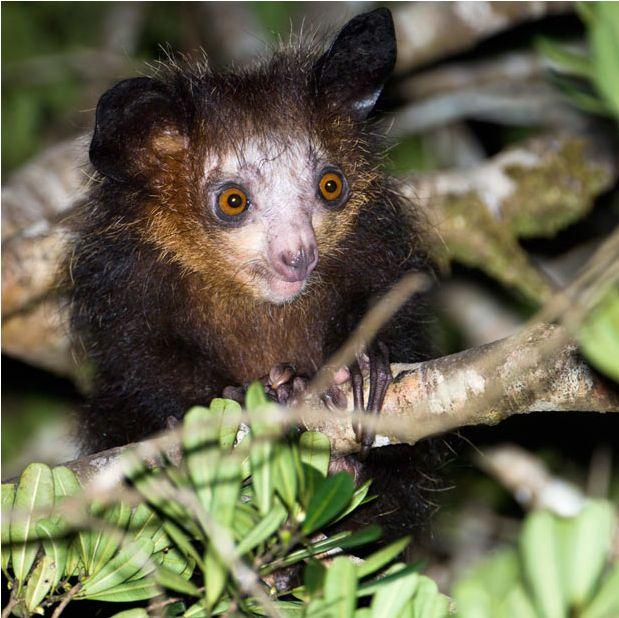
A fascinating journey, Nick also photographed a strange ah th. With an overall long finger, he is able to dig into the bark of the tree as the "fish" in the water, searching for larvae there and scoop.


The adult male fossa (Crytoprocta Ferox) wanders through the deciduous forest of western Madagascar.

From the continent of Africa, the island was cut off 160 million years ago. But the inhabitants of the island have evolved features that are not found anywhere else. Many of the animals that are in the pictures of Nick can be found only in Madagascar.
Verreaux's Sifaka (Propithecus verreauxi) passes through the open space in the spiny forest, southern Madagascar.

Of concern is the fact that a large number of animals in these photos could disappear in the next 20 years. Poor local communities cut down forests to make way for crops such as rice. A huge amount of wood harvested from forests destroyed, used for the production of charcoal. Nick said: "In its pristine state of Madagascar was covered by 85% forest, and now there are only 8%. Even more shocking is the fact that 50% of the forest loss has occurred in the last 50 years and I have seen these mass destruction. So I started to go here since 1991, the high hopes for the revival, I do not cherish. "
Male kopenosogo chameleon (Calumma Gallus) in lowland tropical forests near Mantadia, eastern Madagascar.

Although the number of national parks on the island is growing, environmentalists fear that this will not be enough to save many animals. "When I first visited Madagascar, there were only two national parks," - says Nick. "It is now their number has grown to 20, and they serve as a refuge for animals, where the cutting of trees is illegal, but in practice it does not always work".
The adult black-and-white Ruffed Lemur (Varecia Variegata) hanging on a branch of the National Park Andasibe-Mantadia, eastern Madagascar.

"It is inevitable that all national parks are run by people living on the island, and it is still equivalent to the loss of animals," - he says. "A large number of individuals will be easy to fade and in the parks will not stay, who to protect. We need to slow down the level of destruction and save the amazing variety ".
Koltsohvostatye lemurs (Lemur catta) basking in the sun at dawn, the park Berenty Private Reserve, southern Madagascar.

Nick Garbutt with koltsohvostym lemurs, who was left an orphan, near the national park Tsimanampetsotsa in November 2009.

Nick Garbutt in Ranomafana National Park in May 1991, during his first visit to the island.

Pygmy stump-tailed chameleon (Brookesia peyrierasi) on the finger in the reserve Nosy Mangabe, northeast of Madagascar.

Adult female fossa (Crytoprocta Ferox) hunting for prey in the forest in the park Kirindy in western Madagascar.

Male moths comet (Argema mittrei) dries its wings in the forest in the national park of Mantadia, Madagascar.

Male zhirafosheego weevil (Trachelophorus Giraffa) in the rainforest Vohiparara, National Park Ranomafana, Madagascar.

Listohvosty geckos (Uroplatus fimbriatus) climbs on a tree trunk in the park of Nosy Mangabe, northeast of Madagascar.

Nick Garbutt photographs chameleon-pantreru Masoala National Park in October 2009.

Painted Mantella Frog (Mantella madagascariensis) in the national park Mantadia, eastern Madagascar.

Male Panther Chameleon (Furcifer pardalis) looking for prey in the vegetation on the beach Peninsula National Park Masoala, northeast of Madagascar.

Amazing bird Helmet Vanga (Euryceros prevostii) near its nest in NP Masoala, in the northeast of Madagascar.

Male Parsons chameleon (Calumma parsonii) in the rainforest, the National Park Masoala, Madagascar.

Huge baobabs (Adansonia grandidieri) at dusk, near Morondava, western Madagascar.

Belogub tree frog (Boophis albilabris) sitting in the tropical forests in the national park Ranomafana, south-east of Madagascar.

A fascinating journey, Nick also photographed a strange ah th. With an overall long finger, he is able to dig into the bark of the tree as the "fish" in the water, searching for larvae there and scoop.




